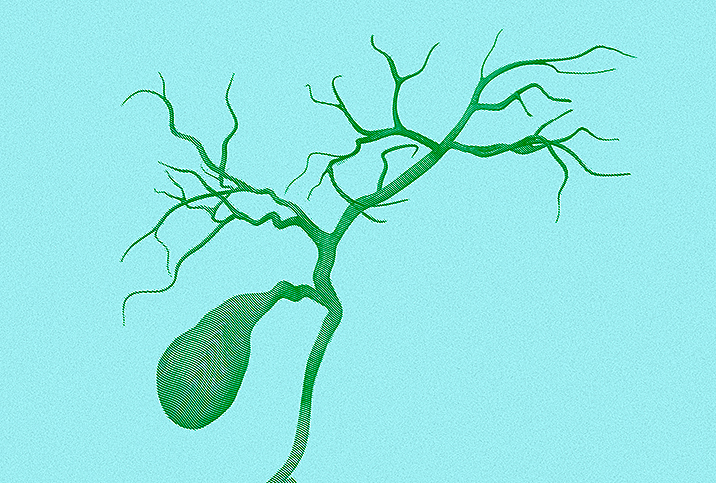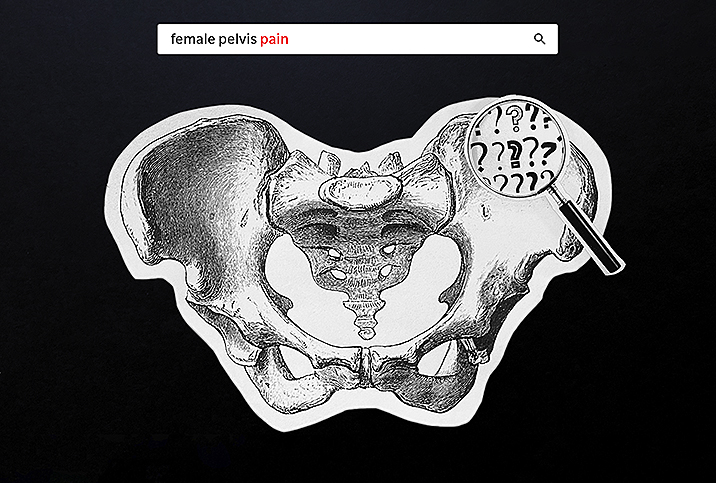Just What Is My Gallbladder Doing?

Every year, more than 300,000 people have their gallbladder removed in a procedure known as a cholecystectomy, making it one of the most common medical procedures in the United States.
Aside from hearing a brief mention of it in high school anatomy class, most people never give a second thought to their gallbladder. Most of us have likely forgotten the organ exists in our body at all, until a doctor suddenly recommends it be removed.
And while we're agreeing to anything just to make the pain stop, a vague question rattles around in our brains: What is a gallbladder, anyway?
Think of it as a tree
"You know, your gallbladder is a relatively small organ," said Hobart Harris, M.D., a professor and the chief of gastrointestinal surgery at the University of San Francisco. "It's shaped somewhat like a wine flask, so it has a teardrop shape. It's part of what's called your biliary system."
Ultimately, Harris said it's probably best to think of the biliary system as a tree.
"So there's a main trunk to the tree and that's what's called the common bile duct. The gallbladder is attached to that main trunk by a major branch, but then the upper branches of the tree and the twigs are all within the liver," he said.
Instead of water passing through the trunk of the tree, it's a substance called bile. You're probably familiar with bile as the acidic, greenish liquid that comprises the part of vomit that burns your nose and throat. The gallbladder basically serves as a repository for excess bile produced by the liver. Anytime you eat something, it squeezes out this bile to aid in digestion.
"The gallbladder basically concentrates that bile and makes it into almost like an au jus of a sauce," explained Victoria Lyo, M.D., the associate director of clinical research for alimentary and metabolic science at the University of California, Davis. "So when you're eating, that process essentially signals our bodies to make all these different hormones. And some of those hormones tell the liver, the gallbladder and the intestines that it's time to process that meal and break it down."
The gall of these stones
The most prominent issue affecting the gallbladder is the formation of gallstones.
Gallstones, like kidney stones, are problematic in that they block the tube that allows bile to flow out of the gallbladder and into the intestines; they can create a blockage farther downstream, too, in the common bile duct. Bile gets backed up in the gallbladder, which can, over time, lead to an infection and/or inflammation—a condition called cholecystitis—because bacteria thrive on the trapped bile. The end result is a squeezing pain in your abdomen.
Symptoms of gallstones include severe pain in the upper abdomen, pain in the right shoulder or between the shoulder blades, nausea and vomiting, fever and chills, a yellowing of the skin and eyes, abdominal bloating, severe indigestion and gas.
Gallstones form as a result of the over-saturation of cholesterol levels. Harris, thankfully, offered a simple analogy for how this process works. He compared it to making rock candy.
Highly concentrated cholesterol forms around bits of debris or mucus in the gallbladder, eventually crystallizing, and once that crystal becomes large enough it forms a gallstone.
"You take water and heat it up so you could dissolve a lot of sugar in it, and you end up with a supersaturated solution of sugar," Harris explained. "Then you drop a string in there, and sugar crystals form because the string serves as what is molecularly called a nucleating event. It basically provides a scaffolding around which the sugar can attach itself and form crystals. The same thing essentially happens in the gallbladder. There's no string, but you get supersaturated bile with a much higher-than-normal concentration of cholesterol."
Basically, that highly concentrated cholesterol forms around bits of debris or mucus in the gallbladder, eventually crystallizing, and once that crystal becomes large enough it forms a gallstone. Interestingly, gallstones are also more common in women than they are in men, at a ratio of about three to one.
"This is largely related to the presence of higher estrogen levels as compared to men," Harris said. "Estrogens increase the clearance of bad cholesterol from the circulation, but do so by putting that bad cholesterol into the bile."
And like that—poof—it's gone
All people with gallstones may not go on to develop cholecystitis; however, for those who do, the pain is significant and often an emergency and should not be ignored.
"Some people try for non-surgical options for treating gallstones," Lyo said. "You know, avoiding greasy foods or having a bland diet, but it really only makes the pain go away. The gallstones don't. They can also cause gallbladder infection, or in more emergency-type situations, the gallstone can fall and block off the liver, and that can cause inflammation in the bile duct."
Lyo covered a few different scenarios that could arise from untreated symptomatic gallstones, including pancreatitis and liver damage. If you have symptomatic gallstones, it's good to get evaluated by an ER physician to get a complete workup to determine the best next steps in management, with the most common treatment being surgical removal.
'Some people try for non-surgical options for treating gallstones...but it really only makes the pain go away. The gallstones don't.'
As Lyo pointed out, the predominant method of gallbladder removal is through minimally invasive surgery, which doesn't involve opening up your abdomen. Open abdominal surgery is sometimes required in more complicated cases, but more commonly, minimally invasive surgeries are utilized. They involve inserting a small camera and surgical tools through small incisions to separate the gallbladder from the biliary tree and close off the important vessels to the gallbladder.
Other techniques such as robotics surgery are also available but accomplish a similar goal of removing the gallbladder while minimizing or avoiding open abdominal surgery, which can have higher overall risks.
So how does removing this extra bile repository affect your ability to digest and break down foods?
Well, it doesn't. Most people don't notice any difference at all, though Lyo did say that perhaps 20 to 25 percent of people might have diarrhea after especially fatty meals (though, to be honest, that can happen when you still have a gallbladder).
Similar to the appendix, the gallbladder isn't essential for life, so having it evaluated through a physical exam and testing to determine the exact cause and to discuss the best management option, which is often surgical, is generally the best course of action.

















